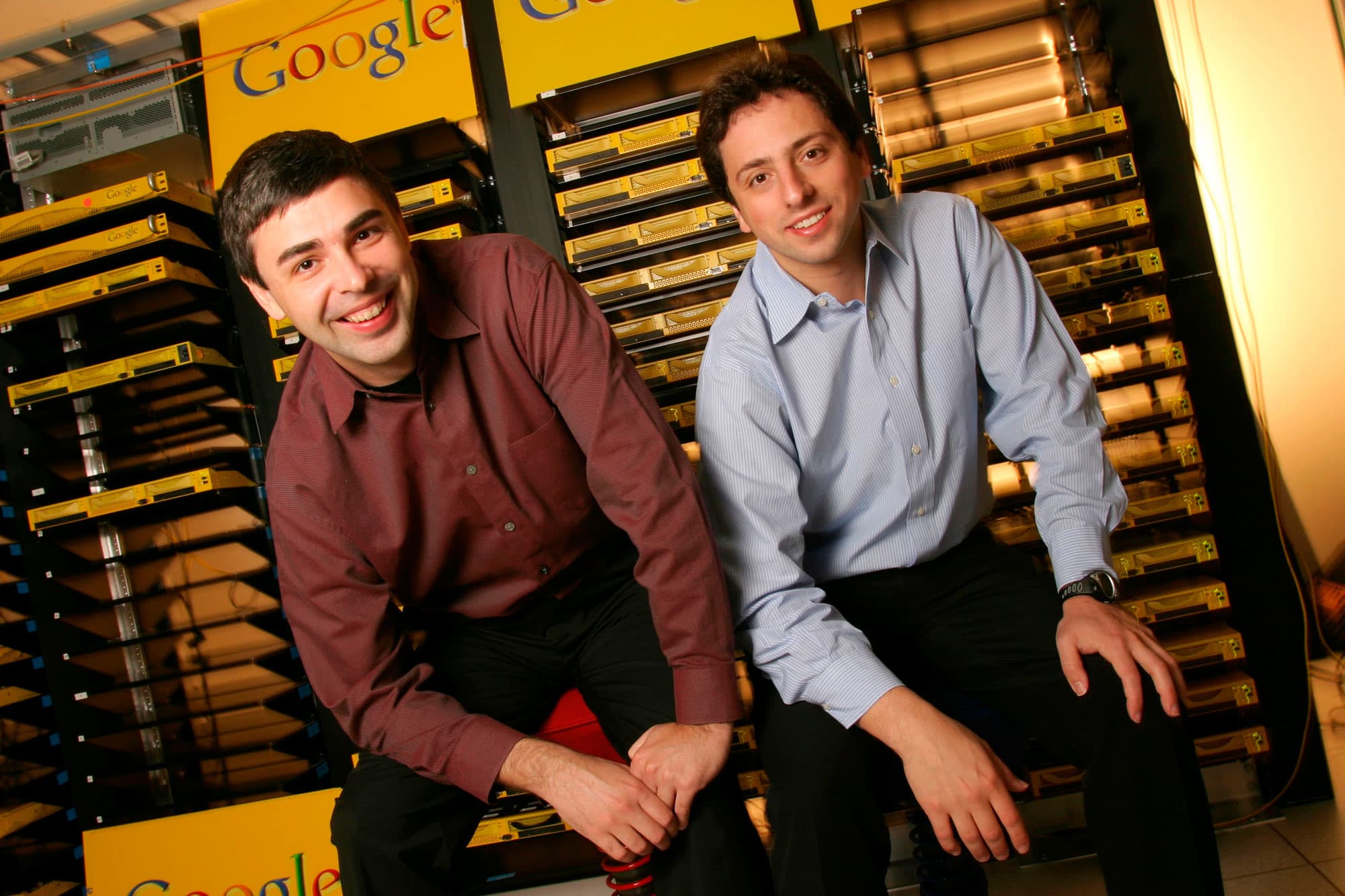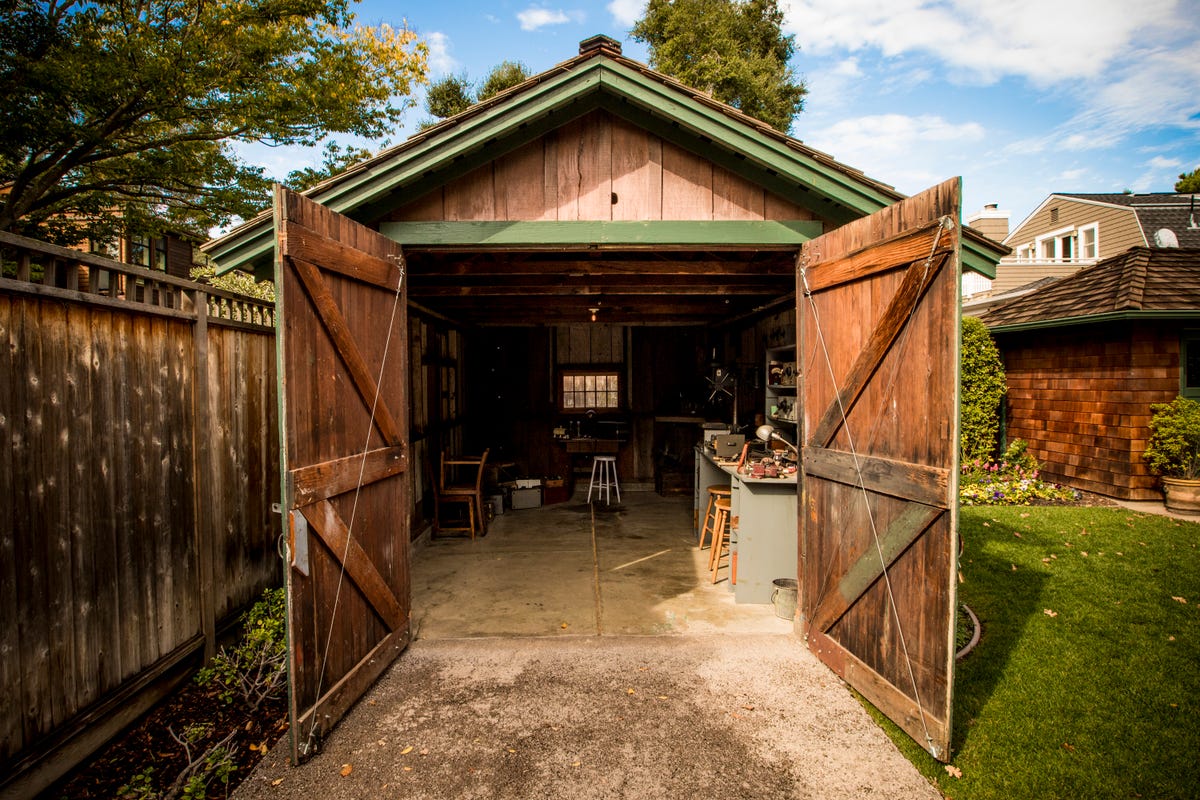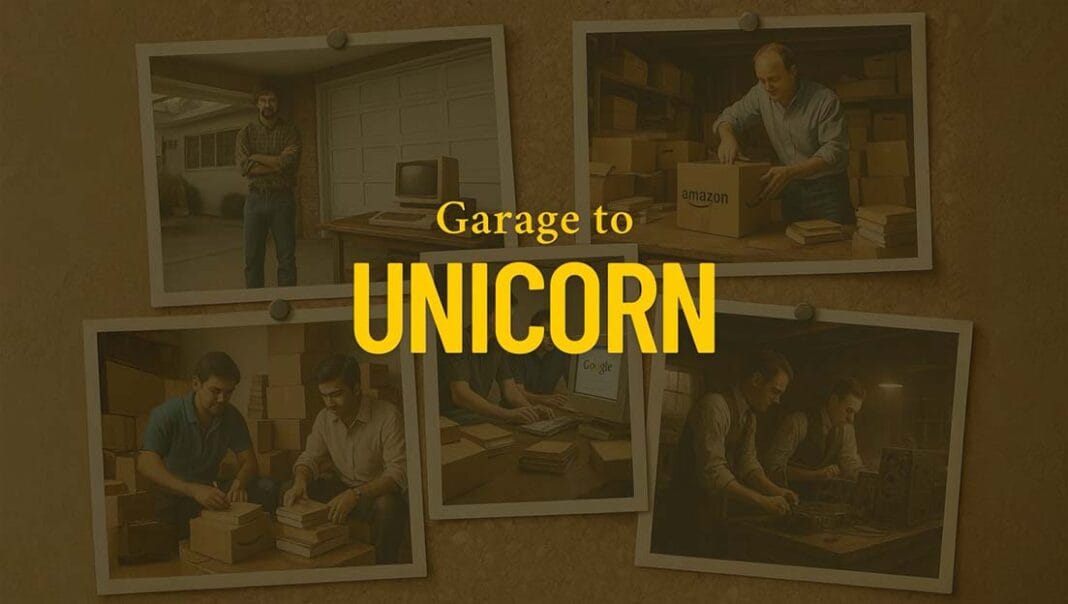From Garage to Unicorn: The Untold Stories of 5 Billion-Dollar Giants That Started Small
Take a look at any glossy corporate headquarters today—glass facades, designer cafeterias, AI labs, billion-dollar product lines. It’s easy to believe these companies were always this powerful, this polished, this unstoppable.
But peel back the layers, and you’ll find that many of the world’s most valuable companies didn’t begin with million-dollar seed rounds or venture capital backing. They started in cluttered garages, dusty basements, rented bedrooms, or makeshift dorm rooms—built on late nights, hand-me-down furniture, and the sheer belief that something better could be built.
Today, let’s rewind and revisit five companies whose garage-born beginnings didn’t just make for good PR—they hardwired values that would become the backbone of their culture and success.
Also read: Zoho’s $1 Billion Journey Without VC: How This Indian SaaS Giant Outpaced Silicon Valley
Apple: The Garage that Changed the World

Where It Began:
In 1976, Steve Jobs, Steve Wozniak, and Ronald Wayne worked out of Jobs’ parents’ garage in Los Altos, California. Back then, “Apple” was just an idea—one that involved building hobbyist circuit boards for a few nerdy friends in the local Homebrew Computer Club.
Jobs sold his beloved VW van for a few hundred dollars. Wozniak sold his HP calculator. That money bought parts for the Apple I—a bare-bones motherboard without a case, screen, or keyboard. The trio assembled them by hand on a makeshift workbench.
What the Garage Taught Them:
Jobs’ obsession with design minimalism, Wozniak’s engineering wizardry, and their ruthless resourcefulness took root here. They did everything themselves—sourcing parts, designing circuitry, negotiating with local computer stores.
These lean days instilled an intolerance for waste and a worship of elegance that became Apple’s soul. Every iPhone, MacBook, or iPad today echoes the same DNA: beautiful, simple, tightly integrated, designed to just work.
That cramped Los Altos garage? It wasn’t just a workspace. It was the birthplace of a belief: technology should be human, delightful, and uncompromisingly simple.
Also read: Garuda Aerospace: From Dorm Room Dream to India’s Drone Powerhouse
Amazon: The Bellevue Garage That Built The “Everything Store”

Where It Began:
1994, Seattle suburb of Bellevue. Jeff Bezos left a cushy Wall Street job to chase a wild idea: selling books online.
Armed with a business plan scribbled on the backseat of his car, Bezos rented a house with a garage that doubled as Amazon’s first headquarters. Desks were just cheap doors propped up on 4x4s—a cost-saving trick that lives on today as the symbolic “door desk” at Amazon offices.
Bezos and his then-wife MacKenzie packed boxes themselves, drove them to the post office, and manned customer emails around the clock. The site crashed often, but customers kept coming. By 1996, Amazon had sold books to all 50 states and 45 countries.
What the Garage Taught Them:
The famously frugal, relentless “Day 1” mentality was born here. Bezos’ core rule was: Always act like a startup. Be hungry, stay lean, and never stop obsessing over what the customer wants.
From books, Amazon expanded into toys, CDs, everything. Then came AWS, Kindle, Alexa. But every new bet follows the same early lesson: experiment boldly, listen to customers, cut costs mercilessly, and never lose that garage grit.
Also read: Rapido Food Delivery: 7 Bold Moves Behind Its Zero-Commission ‘Ownly’ Launch
Google: A Friend’s Garage and a World-Changing Algorithm

Where It Began:
In 1998, Larry Page and Sergey Brin, two Stanford PhD students, needed space to work on their experimental search engine, “BackRub.” They rented the garage of Susan Wojcicki, who was struggling to pay her mortgage at the time (Susan would later become the CEO of YouTube).
Their set-up? Second-hand computers, old desks, a ping-pong table, and cables strewn across the concrete floor. The original servers were built from cheap, mismatched computer parts mounted in makeshift casings.
Google’s mission was ambitious: organize the world’s information and make it universally accessible. Their PageRank algorithm ranked web pages based on how many other pages linked to them—a radical idea that made search results far more relevant than clunky directories of the time.
What the Garage Taught Them:
Google’s early days hardwired an engineer-first culture—experimentation, rapid iteration, and an almost academic curiosity for solving complex problems.
Their early motto, “Don’t be evil,” reflected an idealistic belief that technology could be a force for good. The garage’s open chaos encouraged brainstorming and side projects, which later inspired the famous “20% time” rule that birthed products like Gmail and AdSense.
Today’s Googleplex campus might be a playground of nap pods and self-driving cars—but the seed was a cluttered garage where two grad students cracked how we’d all find information for the next 50 years.
Also read: India’s Brain Health Revolution: How Ivory is Making Cognitive Wellness a Daily Habit
Flipkart: Bengaluru Bedrooms and India’s E-Commerce Revolution

Where It Began:
2007, Bengaluru. Sachin and Binny Bansal (not related) were ex-Amazon engineers with a simple goal: build India’s answer to Amazon, starting with online books.
Their “garage” was a two-bedroom apartment that doubled as an office, storage unit, and packaging station. There was no e-commerce blueprint for India—no reliable payment gateways, shaky internet speeds, and a delivery system that barely existed.
The Bansals did everything: listing books, managing the tiny website, taking customer calls, packing orders by hand, and sometimes personally handing over parcels when couriers failed.
What the Bedroom Taught Them:
These constraints forced Flipkart to become India’s first true e-commerce pioneer. When courier services wouldn’t guarantee cash on delivery, they built it themselves. When payments failed, they designed solutions. Warehousing, last-mile delivery, returns—they built an entire ecosystem brick by brick.
This scrappy, ground-up resilience gave Flipkart the agility to outpace global rivals and reshape how India shops online.
Also read: Zoho’s $1 Billion Journey Without VC: How This Indian SaaS Giant Outpaced Silicon Valley
HP: The Original Silicon Valley Garage

Where It Began:
Long before Apple or Google, there was Hewlett-Packard. In 1939, Bill Hewlett and Dave Packard rented a tiny garage in Palo Alto for $45 a month. Their first product? An audio oscillator—an electronic instrument used by sound engineers.
Their first big break came when Walt Disney Studios bought eight oscillators to test sound systems for Fantasia. That Disney order pulled HP out of obscurity and helped pay the rent on that tiny garage at 367 Addison Avenue.
Today, this garage is literally known as “The Birthplace of Silicon Valley.”
What the Garage Taught Them:
Hewlett and Packard’s humble set-up forged a culture of experimentation and employee trust. They created what’s now called the “HP Way”—a management style that prized innovation, teamwork, and respect.
Their garage taught them that big ideas can thrive anywhere—so long as people are empowered to tinker, fail, and try again. HP’s scrappy start became the template for thousands of Silicon Valley startups that followed.
Also read: Garuda Aerospace: From Dorm Room Dream to India’s Drone Powerhouse
Humble Beginnings: The Common Thread
What unites these stories? It’s not just nostalgia—it’s proof that limited resources can be a secret advantage.
When you have less money, you get scrappy. When you have no fancy labs, you build one. When logistics don’t exist, you invent them. And when everyone tells you it won’t work, you’re too busy soldering motherboards or packing boxes to care.
Each garage, bedroom, or basement taught its founders timeless lessons:
- Resourcefulness trumps budget.
- Customer obsession beats boardroom theory.
- Culture is built, not bought.
- An idea in a garage can change the world—if you dare to start.
What’s Your Garage Story?
Today, the garages might be gone. The founders might sit in glass towers, ring stock bells, or step onto keynote stages in black turtlenecks. But at their core, these companies never really left that garage.
And maybe that’s the lesson for all of us with big ideas scribbled on napkins: your cramped bedroom, your dining table, your dusty spare room—it might just be the next “birthplace” that changes the world.
So, what’s stopping you?
Also read: Zepto: The Inspiring Journey from an Idea to India’s Quick-Commerce Unicorn


